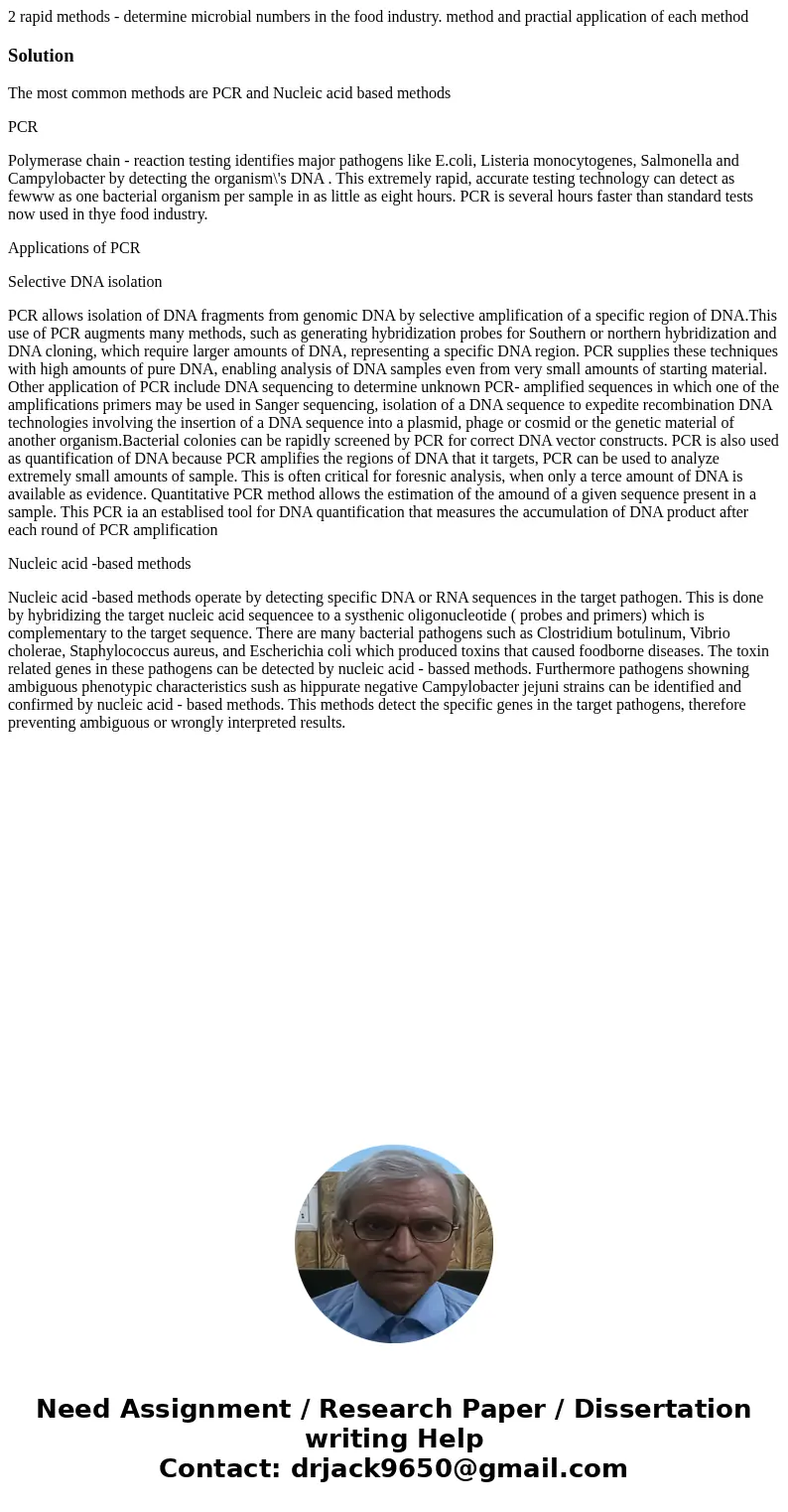2 rapid methods determine microbial numbers in the food ind
2 rapid methods - determine microbial numbers in the food industry. method and practial application of each method
Solution
The most common methods are PCR and Nucleic acid based methods
PCR
Polymerase chain - reaction testing identifies major pathogens like E.coli, Listeria monocytogenes, Salmonella and Campylobacter by detecting the organism\'s DNA . This extremely rapid, accurate testing technology can detect as fewww as one bacterial organism per sample in as little as eight hours. PCR is several hours faster than standard tests now used in thye food industry.
Applications of PCR
Selective DNA isolation
PCR allows isolation of DNA fragments from genomic DNA by selective amplification of a specific region of DNA.This use of PCR augments many methods, such as generating hybridization probes for Southern or northern hybridization and DNA cloning, which require larger amounts of DNA, representing a specific DNA region. PCR supplies these techniques with high amounts of pure DNA, enabling analysis of DNA samples even from very small amounts of starting material. Other application of PCR include DNA sequencing to determine unknown PCR- amplified sequences in which one of the amplifications primers may be used in Sanger sequencing, isolation of a DNA sequence to expedite recombination DNA technologies involving the insertion of a DNA sequence into a plasmid, phage or cosmid or the genetic material of another organism.Bacterial colonies can be rapidly screened by PCR for correct DNA vector constructs. PCR is also used as quantification of DNA because PCR amplifies the regions of DNA that it targets, PCR can be used to analyze extremely small amounts of sample. This is often critical for foresnic analysis, when only a terce amount of DNA is available as evidence. Quantitative PCR method allows the estimation of the amound of a given sequence present in a sample. This PCR ia an establised tool for DNA quantification that measures the accumulation of DNA product after each round of PCR amplification
Nucleic acid -based methods
Nucleic acid -based methods operate by detecting specific DNA or RNA sequences in the target pathogen. This is done by hybridizing the target nucleic acid sequencee to a systhenic oligonucleotide ( probes and primers) which is complementary to the target sequence. There are many bacterial pathogens such as Clostridium botulinum, Vibrio cholerae, Staphylococcus aureus, and Escherichia coli which produced toxins that caused foodborne diseases. The toxin related genes in these pathogens can be detected by nucleic acid - bassed methods. Furthermore pathogens showning ambiguous phenotypic characteristics sush as hippurate negative Campylobacter jejuni strains can be identified and confirmed by nucleic acid - based methods. This methods detect the specific genes in the target pathogens, therefore preventing ambiguous or wrongly interpreted results.

 Homework Sourse
Homework Sourse